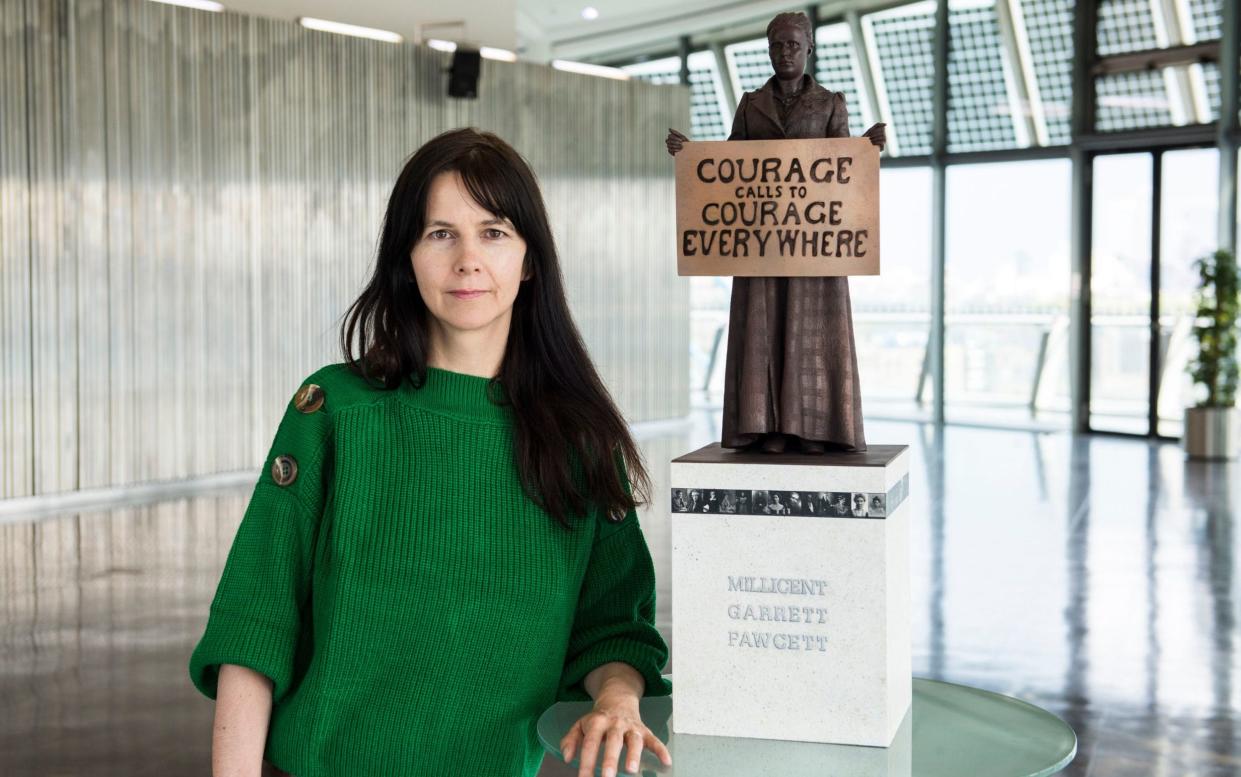We put the first statue of a woman in Parliament Square and - shocker - she's middle-aged

I was standing on the tube platform when the text finally came. As the carriage doors opened, my face had broken out into a massive grin. I think I may have whooped. The man exiting behind me clearly thought that I’d lost it.
And, in a way, I had. Because the news I’d been waiting for for 18 months was finally in my hands: we were going to put up the first statue of a woman in Parliament Square: of suffragette Millicent Fawcett. I was completely overwhelmed.
I hadn’t been able to face going to the planning meeting in person. It meant too much to me - and I knew I wouldn’t be able to cope with being out and about in public if the decision went against us. So I was a coward and left it to Kirsten and Jo from the Mayor of London’s office to go instead - making them swear to text me as soon as they heard.
It all started back in March 2016. I was running through Parliament Square and - probably because it was International Women’s Day - I noticed, for the first time, that all the statues were of men. Of course, I wasn’t going to let that lie.

Frankly, I couldn’t believe someone hadn’t already sorted it out. But they hadn’t, and so I started a petition. More than 85,000 people signed it.
In May, the day after Sadiq Khan won the London mayoral election,Telegraph Women published an open letter signed by a group of amazing women including J K Rowling and Emma Watson, asking the Mayor to show us he had really mean it when he said he was going to be a 'feminist' — and to give us our statue.
It turned out, he did. Within a week of the letter being published I was in City Hall with Sam Smethers, CEO of the Fawcett Society, having a meeting with Deputy Mayor for Culture, Justine Simons; Senior Strategist at the Mayor of London’s Culture Team, Kirsten Dunne; and Mayoral Director of External Affairs, Leah Kreitzman.
It would be fair to say, I was pretty nervous.
I wanted her to have gravitas. I wanted her to be middle aged — a nose-thumb at a society that tells women to keep out of sight once the wrinkles start showing.
But I needn’t have been. From the first meeting it was clear that City Hall were serious about getting this done. They brought in planning specialists; art specialists. They gave us meeting room. They coordinated with Westminster Council. There is no way this statue could have happened without them and I’m so grateful for all the hard work they’ve put in.
I’m also so grateful to Baron Finkelstein, who worked hard behind the scenes to make this a cross-party effort. The Government will be paying for the statue out of the £5million fund set aside to commemorate the centenary of the 1918 Representation of the People Act in February next year.
And what a statue it is. I cried when Gillian Wearing first unveiled her design at a meeting at City Hall. When I spoke to Gillian before she started work on the blueprint, we discussed how old Millicent should be.

I wanted her to have gravitas, like the men who would sit around her in Parliament Square. I wanted her to have purpose. I wanted her to be middle-aged — a nose-thumb at a society that tells women to keep out of sight once the wrinkles start showing.
Gillian’s design was everything I could ever have asked for and more. A decidedly middle-aged Millicent stands holding a placard bearing her famous quote “Courage calls to courage everywhere."
Beneath Millicent, all around the plinth, are the pictures and names of 52 women (and a couple of men) who fought for the vote alongside her — because the battle for suffrage was also a nose-thumb to the 'Great Man of History' way of looking at the past.
It wasn’t one man; it was hundreds, thousands, millions of women. Courage does indeed call to courage everywhere. And, 100 years on, its voice still cannot be denied.



